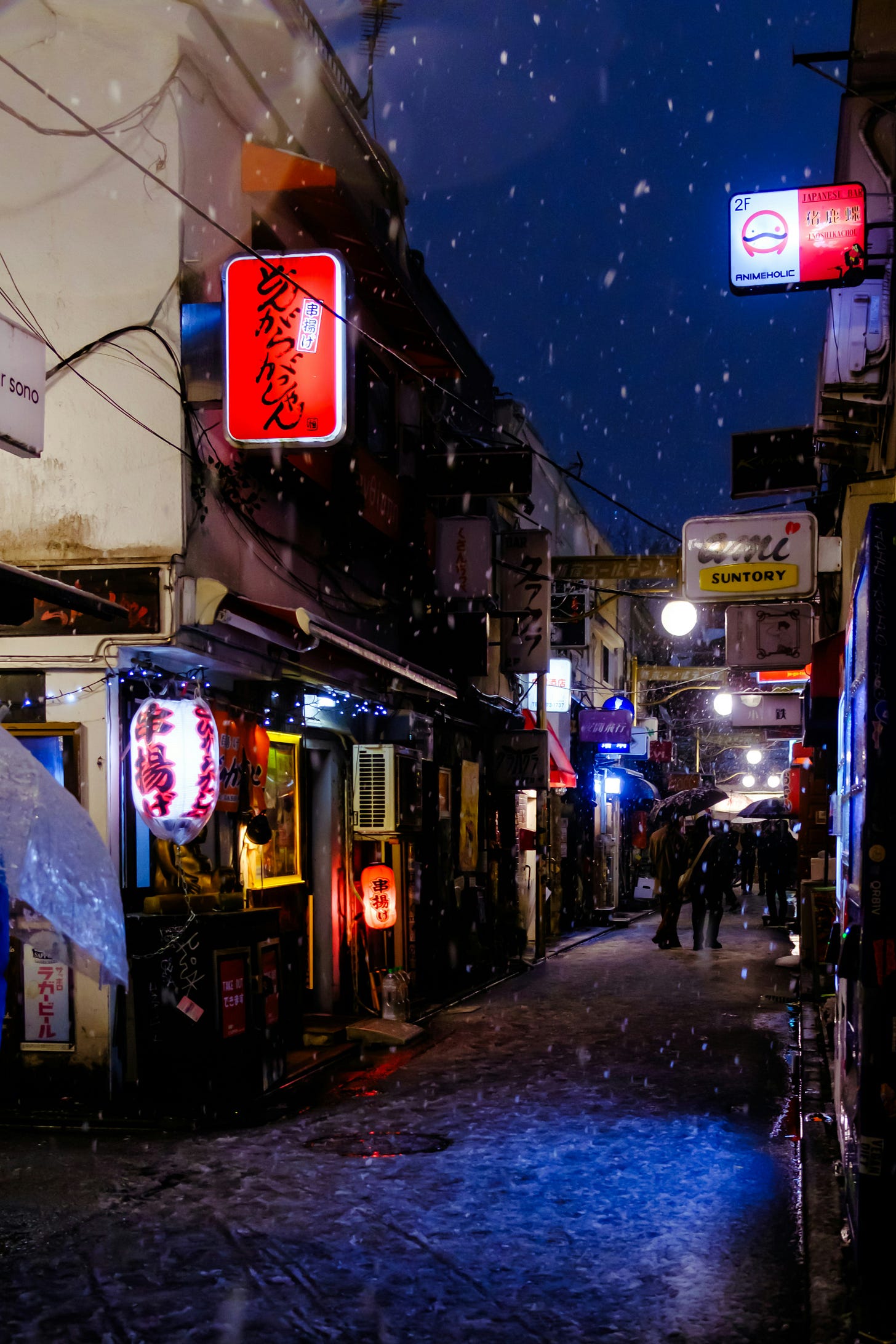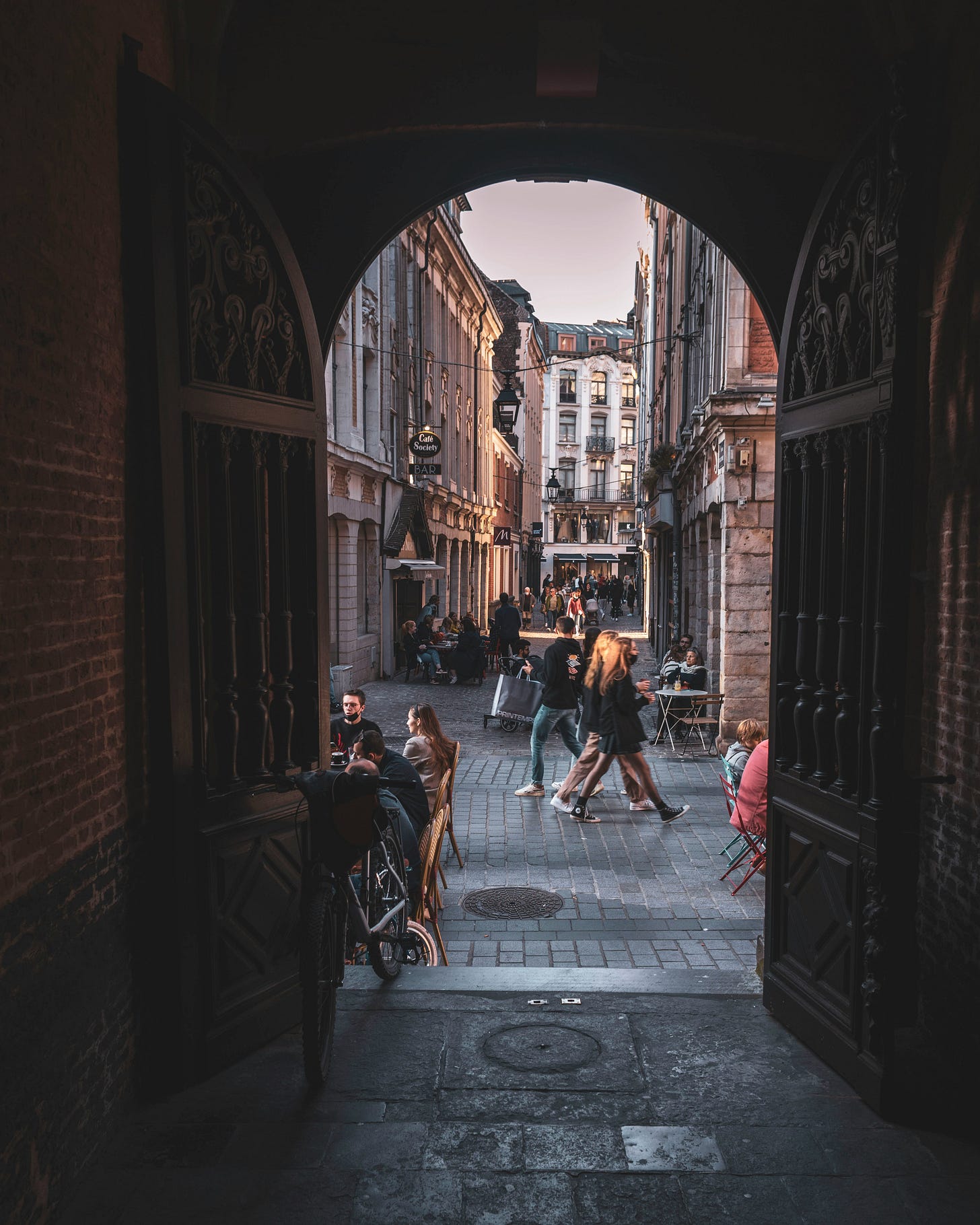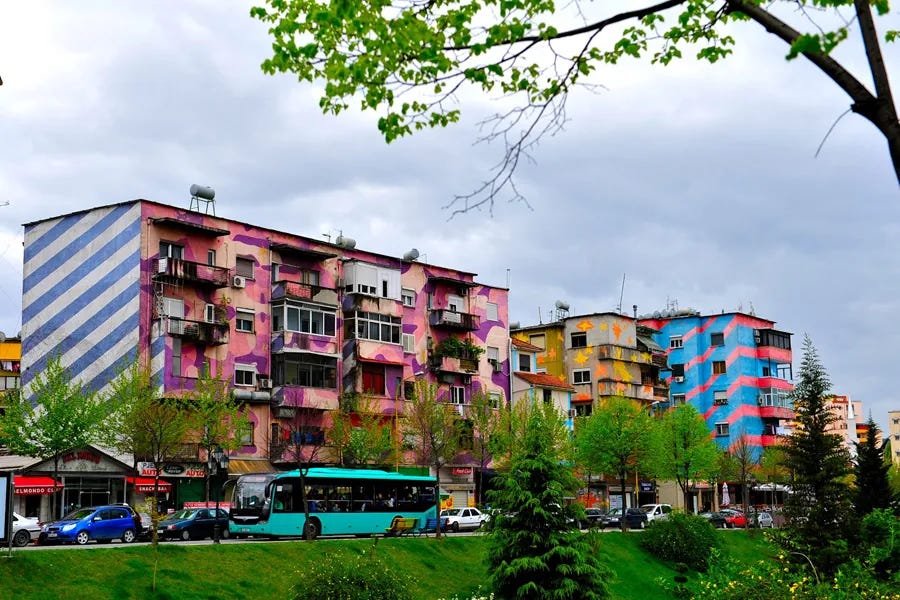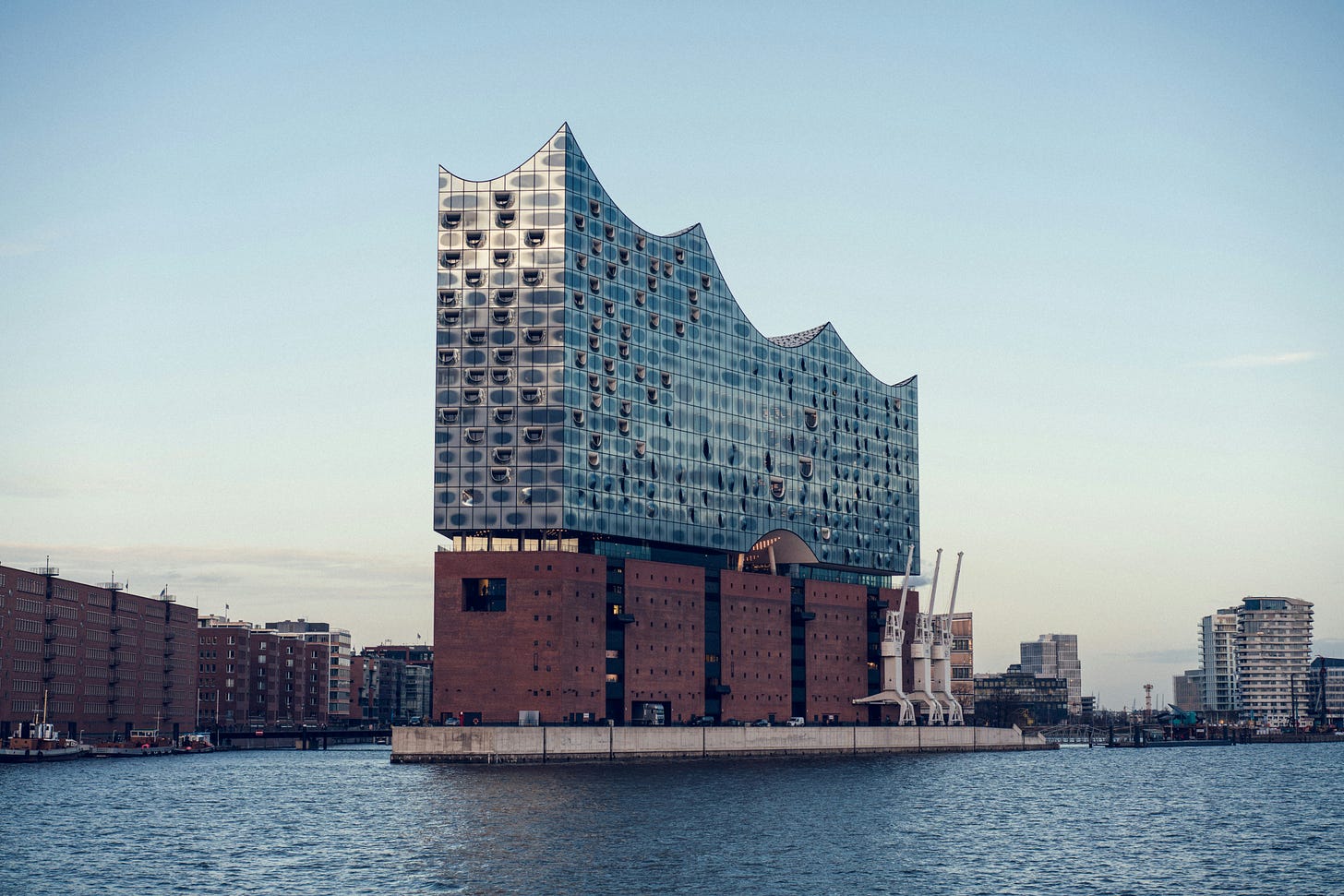Urbanists Have a Communication Problem, and it’s Costing us Great Cities
Can we stop lecturing people about what makes good urbanism, and start selling the feeling of better places to play, live and work?
The people who talk most about towns and cities, ie. urbanists, often have an extraordinary ability to make the intellectual considerations about them sound intolerably dull. So boring in fact, that sat in-between to an urban planner or a banker at a party, and it’s almost tempting to talk about money.
But, seriously, if you’ve ever found yourself at a municipal meeting, or watching even a clip from one on the internet, you’d be forgiven for thinking urbanism is less about creating vibrant and desirable places to live, work and play … and more about inventing new ways to inject jargon like “mixed-use zoning” or discuss “density ratios” in the driest tone imaginable.
This is a problem. Because when you strip the life out of how you talk about cities to the point of it becoming more of an academic exercise, people just stop listening. They assume urbanists are an insular clique, speaking in a different language and not in ways actual people do, where they care about things like more beautiful buildings, affordable homes, shorter commutes, better amenities or simply a nicer public space to sit, that isn’t next to a busy road or homeless shelter.
It’s why ‘cycling advocates’ typically get nowhere with ‘drivers’, or even other casual cyclists that also own a car. It’s why transit nerds get derided when they push for more trains, trams or buses because the existing ones often seem so … well, for want of a technical term, shit. Why any suggestion that a city should be less car-dependent gets met with “BUT WE AREN’T AMSTERDAM OR PARIS!??”

And really, that response isn’t entirely unreasonable.
No, we aren’t Amsterdam or Paris. Ten points to you shouty man. But that doesn’t mean we can’t learn something from them, or indeed Lille, Hamburg, Murcia, Edinburgh, Riyadh, Oulu, Dakar, Buenos Aires, Montreal, Columbus, Melbourne, Hangzhou or lots of other great cities, famous or not. The real issue is that urbanists have been pretty bad at selling the dream, of not just the how, but also the why of great cities … in a way that normal people who have other jobs can appreciate.
Not because urbanists are cleverer than these people, mostly because they’re not, but because it’s like any other business talking to their customers in the industrial code.
Frankly, people don’t really want a “15-minute city”. Not because they’re a bad idea (spoiler: they’re not) but the term wasn’t meant to be a customer facing one. It’s true a city that has all you need in a 15 minute walk or bike is likely to be more enjoyable, less stressful, cleaner, safer, prettier and well, easier to live in. And that might involve using a car sometimes. Cool. But it might also be so good to walk, bike or use transit it, that you wouldn’t even think about getting in your car.
It’s rare for urbanists to talk like that.
Likewise, ‘normal people’ don’t go round talking to their mates about their dreams of “high-density mixed-use developments”. But they probably do chat about walking down a street they don’t normally go down and stumbling into a great pub, coffee shop or new lunch spot.
Nor do they obsess about “active transportation corridors”, but they’d love to pop out for milk and not feel like they need to take the car, or be stressed crossing the busy road.
This is where urbanists could learn a thing or two from great marketers.
Nobody sells a holiday destination by showing you zoning maps. No travel show host has ever said, “This city has a well-balanced modal split!” and made you want to visit. Instead, they make you feel it. The magic of walking through Golden Gai and sampling a few sakes and meat skewers is pretty awesome though. The joy of effortlessly hopping on a tram in Vienna to get around the surprisingly vast numbers of things to see, do, eat and drink. The serendipity of finding an incredible pastry shop in Lisbon, because cities designed for people make life more interesting.

Urbanists should steal this approach with fewer white papers and more emotional persuasion. Cities don’t change from reporting, but more from a momentum of people seeing, feeling and experiencing what can be different, and better.
“Cities have the capability of providing something for everybody, only because, and only when, they are created by everybody.” - Jane Jacobs
→ The best cities emerge from doing, not debating.
That means giving the emotional vibes of places that people pay good money to go on a city break to, and come back thinking “I could live there”. Because it was pretty, the people were fun, there were things to do, the windows of realtors were interesting to look at, lots of photos were taken and public transport took priority over Uber or driving.

People care about that stuff, not the mechanics or the rules behind it. In actual fact, often these places tend to have fewer rules, but a bit more civic love and care, from people outside of municipal governance.
Of course, none of this matters if it’s all just talk. And if there’s one thing urbanists love more than best practice or some statistics to prove their point, it’s talking endlessly about how small things can lead to big changes, rather than actually making them.
Cities don’t change because council gathered and approved a new strategy. It might be a brilliant and sensible document to point at, but the change comes from someone doing the thing.
“The best way to achieve complex goals is to approach them indirectly.” - John Kay
→ Stop planning the perfect city. Make one street better and let people demand more.
Lisbon didn’t write a 600-page report on pedestrian-friendly streets. It turned parking spaces into tiny plazas and adjusted them in real time based on feedback. People liked it, so they did more of it, and they got a bit more ambitious as they went.
Tirana didn’t wait for a comprehensive urban design strategy, but the mayor encouraged the painting over of ugly buildings in bright colours, and people suddenly liked their city more, took photos, word spread, and Albania is having a bit of a tourism moment right now. And not just because it’s cheaper than Croatia.
Tokyo’s streets aren’t walkable because of theoretical best practices. They’re walkable because there are thousands of tiny bars, shops, restaurants and hidden gems that make it fun to explore.
The common theme is really to start small, prove out what works and build some momentum. It’s as hard to stop, once you’ve started as it is to start when you’re stuck still.
Instead of wasting time justifying every minor change to death, just do something obvious. Give the streetcar its own lane. Close a street to cars on weekends. Turn an ugly intersection into a plaza with a few chairs and some paint. Failing that, do something irreverent, let the artist have free reign with an unloved wall in a subway station, allow the buskers to perform where they think they’ll get most attention or sign off on that funny looking building.
“The problem with logic is that it gets you to exactly the same place as everyone else.” - Rory Sutherland
→ Urbanists keep making logical arguments. They should be making emotional, or even magical, ones.
Because once people see a better version of their city, they’ll start demanding more of it.
The Challenger City Mindset
This is what being a Challenger City is all about, not getting bogged down in ideological debates, but actually experimenting, adapting and making change happen. No city becomes great through perfect planning, or at least if they have, nobody seems to know of it. Cities become great through people trying things, seeing what works and doubling down from there. In amongst that, there’s gonna be a few ugly bits, white elephants, follies and failed experiments. Tourists actually sometimes pay to see that shit, it’s wild!
But tourists don’t pay to go hang out in Birmingham. Sorry Brummies. Maybe this is unfair, but we’ve called the city ugly for years after the failed car centric redevelopments of the sixties, and it’s still bad. Now imagine if Disney theme parks had a six lane expressway cutting through the middle of them, but they don’t. It’s weird we can make a theme park work for people, and print money for a corporation, but not make a city figure out places to sleep, sit, eat, shop and get around between them.
So, please, urbanists, stop expecting people to get excited about a zoning reform bill. Instead, make them jealous. Paint the street. Close the road. Give the tram its own lane. Put out some chairs. Choose the weird design. If it works, double down. If it doesn’t, try something else.
Because people don’t change their minds because of reports. They change their minds because they see, feel and experience something better. Give them that, and they’ll demand more, and bigger.
Because otherwise, we’ll be stuck in the same endless debates while the things that annoy us about our cities remain well … the same.





Amen. Rory Sutherland and many other marketers have been some of my best urbanism mentors.
The Economist when selecting the most liveable cities excluded cities like Paris, London and NYC. Their metrics were many but they focused on measuring what lead to a better quality of life. The Globe and Mail does much the same.
Calgary...lots of green space, river, good transportation etc high in both...and is always in the Top ten.
Lets look to Calgary and how that city is managed.